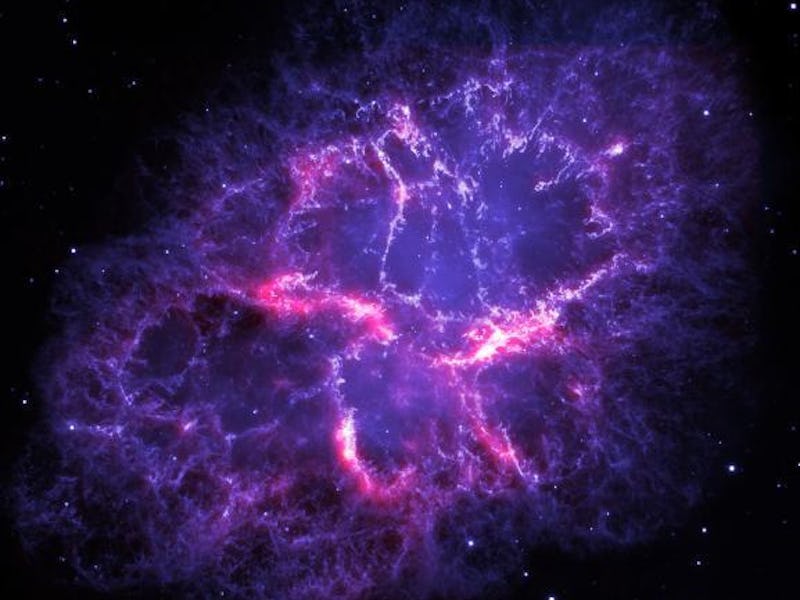This Cosmic Tool Unveils Galactic Evolution
A new, advanced computer model helps scientists recreate a galaxy's past.

Deciphering the history of the stars, billions of years after they formed from swirling cosmic dust, is no simple chore. Now, scientists have developed a new tool, called FADO, to recreate galactic events from long ago, before Earth was even a fledgling ball of boiling rock.
FADO, derived from the Latin word “Fatum,” means fate, and the Portuguese astronomers who developed this sophisticated computer model at the Instituto de Astrofísica e Ciências do Espaço, plan to understand the destiny of different galaxies, beginning from their birth. Although humans can’t yet travel back in time, scientists can make sense of the cosmic past by inspecting the profuse amount of light and radiation spewed into space by galaxies.
“FADO is the first spectral modeling code employing genetic differential evolution optimization, in combination with artificial intelligence algorithm,” explains astronomer Jean Michel Gomes. “This results in key improvements in computational efficiency and accuracy to which the star formation history of galaxies can be reconstructed.”
Image of the Triangulum Galaxy (M33) taken by the VLT Survey Telescope (VST), at ESO
This new cosmic-history tool does this and more. FADO also examines how the universe’s gases have been blasted by a galaxy’s radiated emissions. This gives scientists a vast bank of novel galactic evidence to plug into their computer models, unveiling an improved picture of a galaxy’s cosmic saga.
Earlier models are at a notable disadvantage, because they exclusively account for a star’s light, which is still valuable because it comes in so many varied forms, which are all rich in information: the light we can see, infrared light, x-rays, and so forth.
FADO, while examining ultra-distant galaxies, has similarities to evolving life on Earth. Similar to mixing and fusing chromosomes, which create different physical properties on an animal (like a harder, more robust tortoise shell, for instance), FADO combines different past events, like the initial blast from supernova (a common precursor to star formation) until the program matches what we observe in a galaxy today.
The nearest galaxy to Earth is Andromeda, a colossus spiraled formation that might contain twice as many stars as our Milky Way. Using FADO, scientists can better grasp where this mighty galaxy came from, and how it evolved.